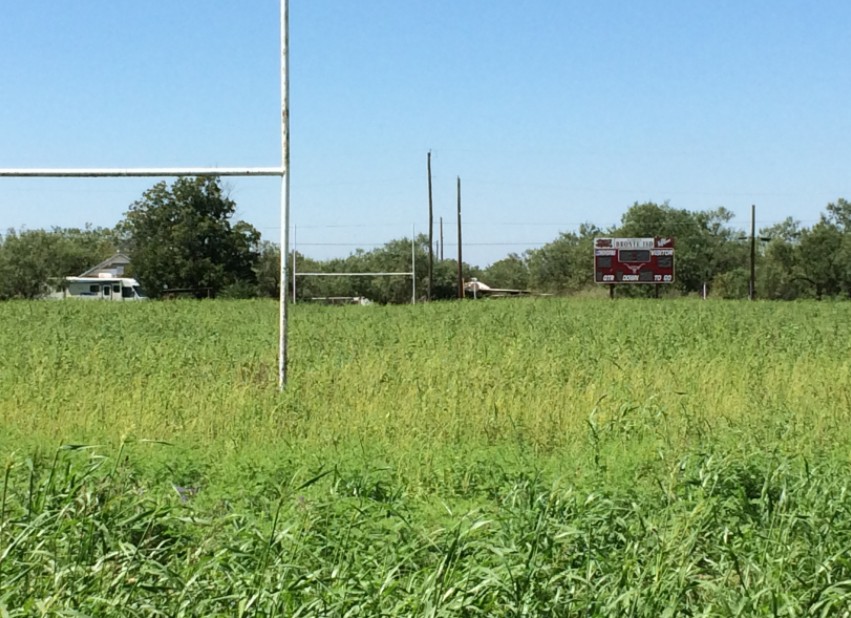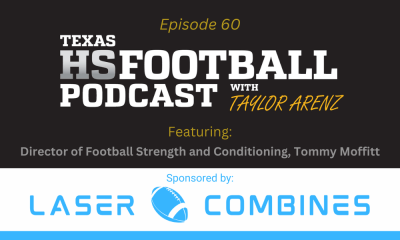
In the past decade there’s been many debates about where high school football will go to here, especially if populations in Texas keep rising. The cities have been getting increasingly bigger, and this shows in the new high schools popping up in places like Frisco and Katy, and the new, multimillion dollar stadiums that house these teams. The money invariably flows to the bigger schools, that’s just the way it is, but where does that leave the smaller schools?
It’s been long surmised that even though the pageantry, the pomp and circumstance, the games on ESPN and the high profile recruits, the heart and soul of the phenomenon of Texas high school football resides in the small towns. They’re the ones who will travel 500 miles round trip for a 4-3 team in a district matchup, they’re the ones whose towns will literally shut down when the teams are good.
This brings us to Bronte, who decided weeks ago that they would voluntarily move down to the six-man ranks. The Bronte Longhorns are members of the old guard of Texas high school football, part of the small town fanaticism that makes the Lone Star State unique. According to Gerald Sandusky (NOTE: no relation to the Sandusky of Penn State), the legendary former head coach of the Longhorns and current mayor of Bronte, said that the issue lies in the future, and notes that this was all but inevitable.
“Most of the gap has been down in the grades, and it doesn’t show much like it’s going to change,” Sandusky said. “We’ve been bouncing between 80, 85, 90 students for years. I think it’s the seventh and eighth grades, where there are only five or six boys in those two grades.”
It seems like there could be a link here, between the small towns dying out and the metropolitan areas of Dallas, Houston, San Antonio, and Austin getting bigger, but the UIL enrollment data doesn’t show that the small towns are getting any, well, smaller. The rise of bigger schools has forced the classification brackets to change, and Bronte routinely played schools twice their size. In the 6A bracket, that would mean a school of about 2,500 would play a school of 5,000. In the 2A bracket, this means a school of 80 would play a school of 160.
On the surface, it may seem like the bigger schools face the biggest disparity, but with that many kids, you’re more likely to at least find functionality at each position. The quarterback at a 6A school may not be headed to a D1 college, but he likely has some natural talent throwing the ball. With smaller schools, this is often not the case, complete rosters are rare, and natural athletes dominate no matter what the position. This placed Bronte at an extreme disadvantage, no matter what.
Ultimately, Sandusky doesn’t think that Bronte has changed at all, just that Texas is changing around it.
“Bronte’s been the same size that it’s always been…I don’t remember the exact number for what it took to be in six-man, but the grade numbers are gradually rising, now it’s 105 to play six-man. Back when I was coaching you were in 11-man from, say, like 80 to 115. Then, if you were above 115, you went into Class A. Well, now it’s from 105 to 155. So it’s very difficult for Bronte to ever be able to compete on a consistent basis.
When asked if he thought Bronte’s situation was indicative of an overall trend across Texas, Sandusky answered simply.
“No. No, I don’t think so. It’s just the fact that the top numbers are moving up so high, you know, people like Bronte that petition to stay in 11-man, if that number keeps moving up, and we’re staying with the same number of students, it’s just hard to compete with ’em.”
Brought to you by:


















